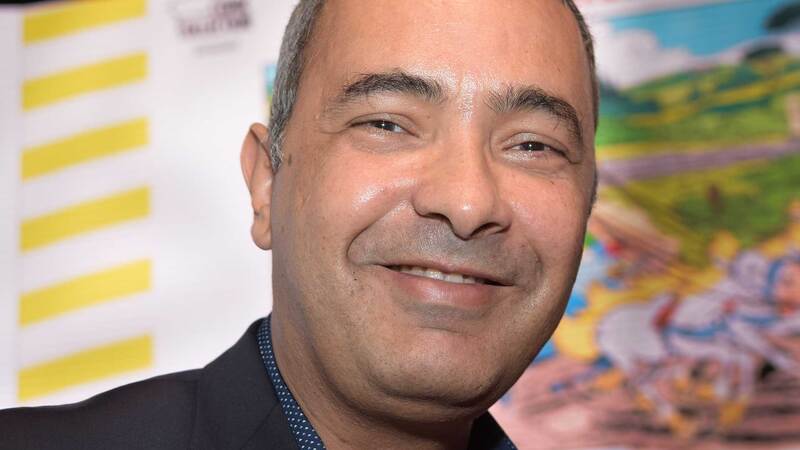You are viewing your 1 free article this month. Login to read more articles.
Connect gauges children’s market
The Bologna Children’s Book Fair and Publishers Weekly joint-sponsored their first children’s conference, Global Kids Connect, followed by a half-day focus on the Chinese children’s market.
The Bologna Children’s Book Fair and Publishers Weekly joint-sponsored their first children’s conference, Global Kids Connect, which took place in New York on 2nd December. It was followed by a half-day focus on the Chinese children’s market on 3rd December.
Global Kids Connect aimed to provide context rather than number-crunching, tackling editorial trends, partnering, licensing and digital, among other topics. Publishers and agents were clearly enthusiastic. For one thing, it was indeed international: UK-based Nosy Crow’s m.d. Kate Wilson moderated panels; France- based Bayard’s Emmanuelle Marie spoke about how the publisher worked with Chronicle to set up a US imprint, Twirl; Italy’s Topipittori was represented by Paolo Canton, who discussed the art of picture-book translation (“sometimes you have to sacrifice faithfulness to the text to be at the service of the book”); and Gecko Press founder Julia Marshall came from New Zealand and wowed with true internationalism (85% of Gecko’s books are translations).
David Kleeman, senior vice-president, global trends at Dubit, the Leeds-based strategy, research and digital consultant for children’s entertainment brands, began with trends from quarterly surveys of how children in the US and UK consume content across a wide variety of devices and platforms. One child will likely experience the same top brand—Lego, Frozen, Star Wars, etc—via television, online, apps, events, DVDs, magazines, movies, video games, toys, board games, music and books. With so much content to choose from, Kleeman’s message was that “discovery is the key to the kingdom”.
Cartoon Network’s Peter Yoder and toy giant Hasbro’s Michael Kelly expanded on Kleeman’s assertion that “books spark other purchases and support other screens”. Yoder said: “We have only 22 minutes [to tell a story on television]; publishers give us time to tell the back-stories.” He emphasised: “Our publishers are fans as well as partners.” As for trends, he pointed to a blurring of demographics: cartoons that attract the six to 11-year-old age range also appeal to teens and adults; Kelly sees a blurring of gender boundaries as well. My Little Pony isn’t just for girls (20%–30% of viewers are three to six-year-old boys); and Transformers isn’t just for boys.
From left: Nosy Crow’s Wilson; literary agent Rosemary Stimola of Stimola Literary Studio; Random House Children’s Books’ Barbara Marcus; and literary agent Ginger Clark of Curtis Brown
Marie explained how, “wanting to control the life of our books in the US”, Bayard decided to “create a brand, a real market existence” by adapting its gift imprint Tourbillon for children into the American list Twirl. Chronicle gets “a significantly higher fee” than in a traditional distribution deal, and fills a gap in its own list with Twirl. Bayard benefits from Chronicle’s sales and marketing strategy and analysis. It also depends on Chronicle’s sophisticated close reading early on, to avoid making faux pas when adapting books for the US market.
On the digital front, Made in Me’s Eric Huang spoke of “unusual practices becoming the usual, even among large publishers”. Nick Marsh of Lost My Name, which recently sold the millionth copy of its personalised print-on-demand (POD) children’s title, said that “POD was never taken seriously as a genuine form of narrative, but we are a future of book publishing”.
On the rights front, Kalah McCaffrey of Franklin & Siegal, Rachel Hecht of Mary Anne Thompson Associates, and Ginger Clark of Curtis Brown described “aggressive action” in Eastern European territories and Turkey. Clark added that, on both sides of the Atlantic, trilogies have become less desirable, being seen as too risky. Looking at the big picture, Wilson sees “trends happening more simultaneously internationally and much faster: they start in the US and hit other markets much sooner. But how much room is there for non-US trends to have international reach? The last time it happened for the UK was [with] Harry Potter.”
Random House Children’s Books president and publisher Barbara Marcus stated that “the business of children’s books is really strong, but the challenge continues to be access and discovery”. She and Wilson had a disagreement over the desirability of a publisher with a market share such as PRH’s controlling global English- language rights, but there was no conflict over the value a publisher brings to the equation in a world where self-publishing now has to be respected. “We earn our keep,” as Marcus put it.
China’s children’s market
Huang Xiaoyan, editor-in-chief of venture capital-funded start-up Trustbridge Publishing, made the following points in his Global Kids Connect presentation:
- Of China’s 582 official publishing houses, 546 published at least one children’s title in 2014.
- In the first six months of 2015, 79 of the top 100 children’s bestsellers in China were by Chinese authors.
- In the Chinese market as a whole, “copyrighted” (i.e. legally published, foreign-originated) titles accounted for 16.3% of revenues in 2014 (–2.4% year on year), and 13.8% of volumes (+0.4%).
- Scholastic, Penguin Random House, Casterman, Bloomsbury, Egmont, Bonnier, Editis, Thienemann, Hachette and HarperCollins are the 10 “strongest influencing foreign publishers” in China’s children’s market.













